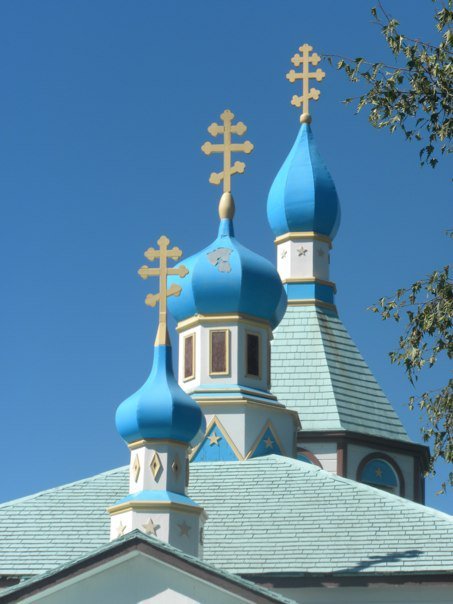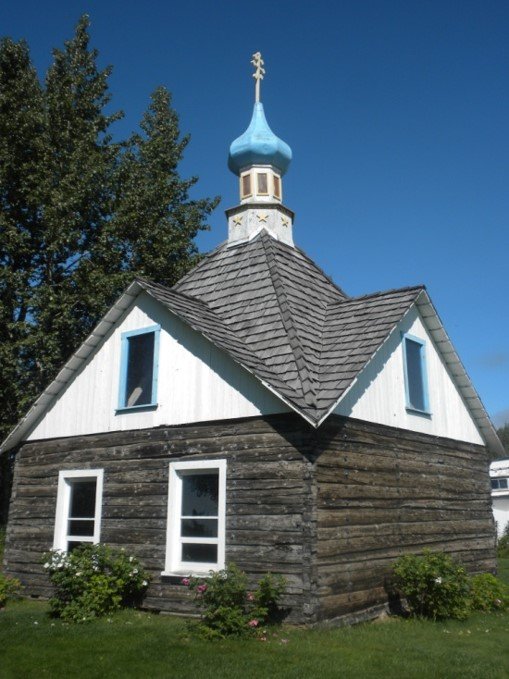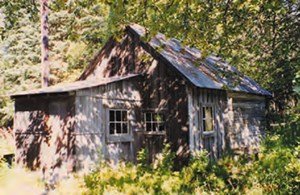City of Kenai
Home Rule City
2022 Population: 7,507
Size: 29.90 Square Miles
Kenai Planning and Zoning Commission: Among its duties, conducts historic preservation reviews.
Date certified: February 7, 1995
 Commission Website
Commission Website
Historic Property Inventory
Preservation Plan
Alaskan Community Profile

-
CLG Grants

Survey and Inventory Grants
Kenai Townsite Historic District Survey. 1995.
Historic Preservation Development/Predevelopment Grants
Holy Assumption Orthodox Church Utility Planning. 2011.
Historic Preservation Education Grants
Informational Signage - Townsite Historic District and Shkituk' Village Site. 1996.
Commission Training Grants
Section 106 Training. 2003.
-
A Brief History
-
Dena'ina people had a large village at the mouth of the Kenai River, Shk'ituk't, when Europeans sailed into Cook Inlet in the 1770s. The Dena'ina had migrated from the interior over a thousand years earlier, displacing the Alutiiq people who lived there. By the late 1700s several thousand Dena'ina had villages and camps throughout the Kenai River drainage. The Dena'ina called themselves Kahtnuht'ana; the Russians called them Kenaitze, "people of the flat land."
Russian fur traders built Fort St. Nicholas at the mouth of the river in 1791 to trade for furs and to harvest fish. About forty Russians and Creoles staffed the post. The Russian Orthodox Church upgraded the chapel at Kenai to a church in the 1840s as the religion took root among the Kenaitze. The rectory standing today was built in 1886 and the Holy Assumption of the Virgin Mary Church in 1895, and are designated a National Historic Landmark.
After the U.S. acquired Alaska in 1867, the Army selected Kenai for a fort to maintain order. The Torrent, the ship bringing troops to establish the post in 1868 wrecked in lower Cook Inlet, delaying building the post a year. The Army closed the post just two years later.
Companies started salmon fishing in Cook Inlet in the 1880s, and built several canneries near the Kenai River mouth. Fishermen and cannery workers moved to the community. Prospectors heard the Russians found gold in upper peninsula streams, and a number who came to look based at Kenai. Big game hunters found trophy bear, moose, sheep, and caribou, king and silver salmon in the area in the late 1890s. Local residents Andy Simons and Andrew Berg are legendary Alaska big game guides.
Much of the Kenai Peninsula was included in the Chugach National Forest, created in 1907 and enlarged in 1909. This did not prevent over hunting the big game animals, and caribou were extirpated from the peninsula in 1912. Hunters advocated for designating the western Kenai Peninsula as a wildlife preserve that would not allow logging or mining as could be done in national forests. In 1941 President Roosevelt signed the order creating the Kenai National Moose Range. In 1980 the moose range was renamed the Kenai National Wildlife Refuge and 1.32 million of it was designated as wilderness.
After World War II, many homesteaders came to the Kenai Peninsula. The Sterling Highway connected Kenai and Anchorage in 1951. North of Kenai, Wildwood Army Base (later Air Force) opened in 1953 for communications and surveillance during the Cold War. It closed in the late 1960s, was briefly a BIA school, and in 1983 the State of Alaska converted some of the buildings into a correctional center.
Also north of Kenai, a significant oil strike was made in 1957 on the Swanson River. The City of Kenai incorporated in 1960 to provide services for the expanding population. The city is within the Kenai Peninsula Borough formed in 1963. Offshore oil discoveries in Cook Inlet in 1965 attracted more industry and people. Today Kenai flourishes with oil and gas, commercial and sport fishing, recreational canoeing and camping, hiking, and hunting, and service industries.
-
-
National Register of Historic Places Listings

Church of the Assumption of the Virgin Mary Kenai NEARBY Kasilof Victor Holm Homestead Soldotna Andrew Berg Cabin Soldotna Soldotna Post Office Soldotna Moose River Site Soldotna
